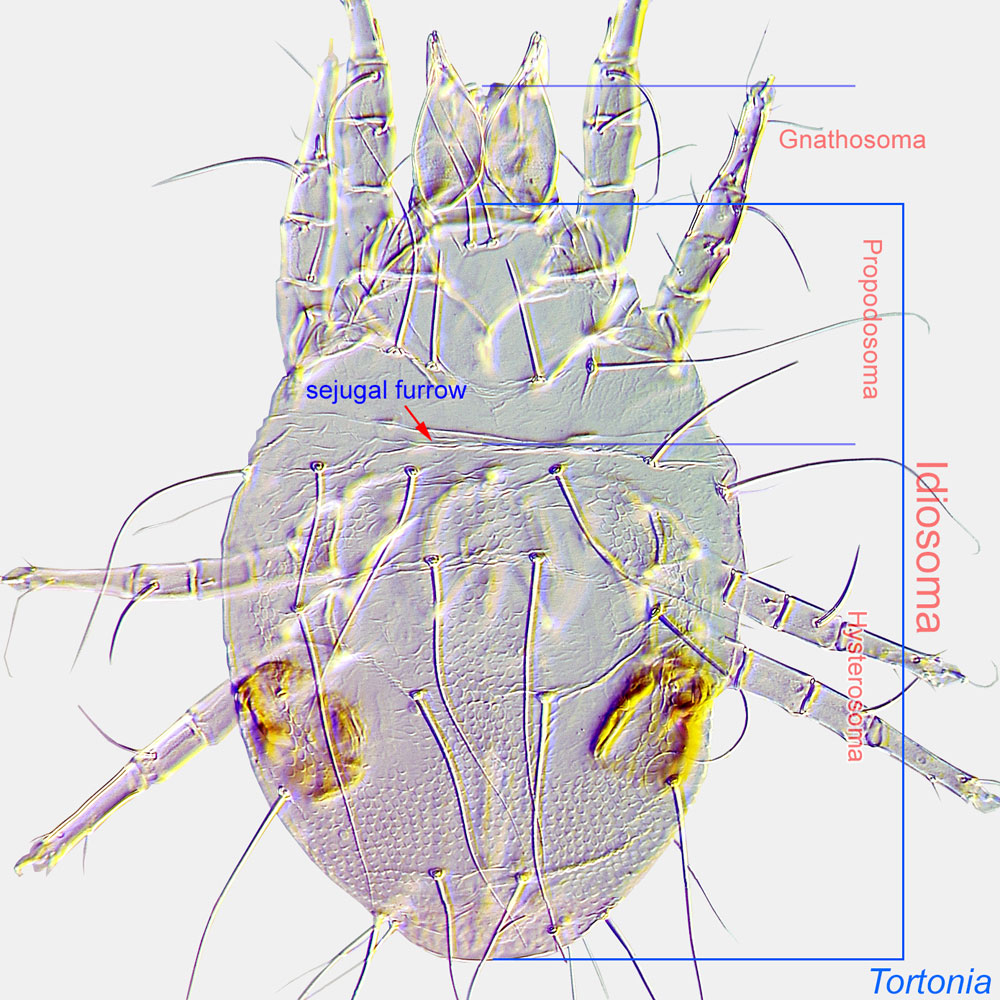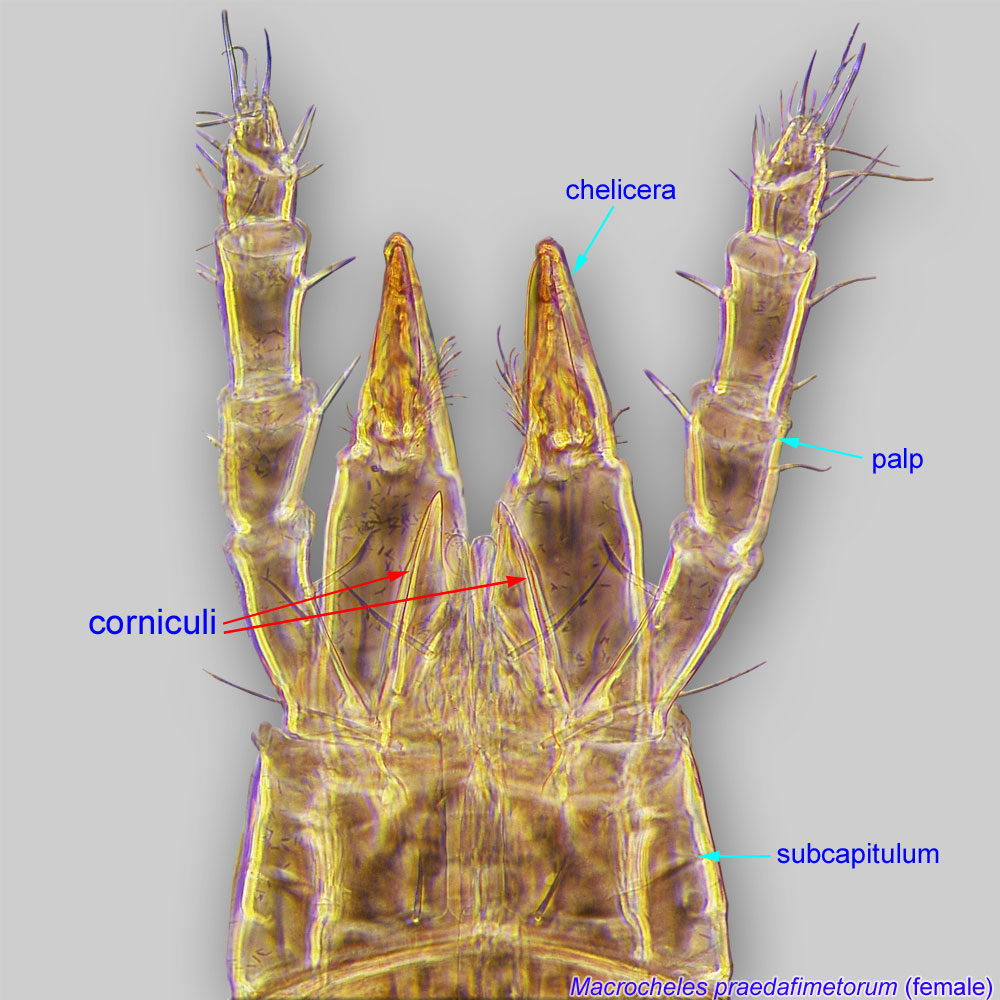neutral to beneficial; general predator of microarthropods in bee nests
Cosmolaelaps Berlese, 1903
Superorder Parasitiformes » Order Mesostigmata » Suborder Monogynaspida » Hyporder Dermanyssiae » Family Laelapidae » Genus Cosmolaelaps
Laelaps claviger Berlese, 1883
Female: With widened dorsal setae having a basal asymmetric protuberance (Figs. 1, 3), dorsal idiosomaidiosoma:
Body not including the gnathosoma.
 with a few unpaired setae (Fig. 1), and typical corniculicorniculus:
with a few unpaired setae (Fig. 1), and typical corniculicorniculus:
Paired, horn-like process (sometimes toothed, bifurcate, trifurcate, spine-like, spatulate, or membranous) on the subcapitulum of parasitiform mites. These processes usually support the salivary styli. If toothed could be confused with a rutellum, a possibly homologous structure in Acariformes and Opilioacarida.
 reaching middle of palpfemur and not extending to its anterior edge (Fig. 7). Otherwise similar to Hypoaspis, Group 1.
reaching middle of palpfemur and not extending to its anterior edge (Fig. 7). Otherwise similar to Hypoaspis, Group 1.
The genus Cosmolaelaps comprises 108 species (Moreira et al., 2014Moreira et al., 2014:
Moreira, G. F., H. Klompen amp; G. J. De Moraes. 2014. Redefinition of Cosmolaelaps Berlese (Acari: Laelapidae) and description of five new species from Brazil. Zootaxa. 3764: 317-346.), which are predators of small microarthropods in soil and related habitats. One species, Cosmolaelaps vacuus, a generalist predator, was described and included in a key to British species (Evans and Till, 1966Evans and Till, 1966:
Evans, G. O. amp; W. M. Till. 1966. Studies on the British Dermanyssidae (Acari: Mesostigmata) Part II. Classification. Bulletin of the British Museum (Natural History) Zoology. 14: 107-370.).
By the presence of widened dorsal setae similar to Stratiolaelaps. Cosmolaelaps can be distinguished from Stratiolaelaps by its typical corniculicorniculus:
Paired, horn-like process (sometimes toothed, bifurcate, trifurcate, spine-like, spatulate, or membranous) on the subcapitulum of parasitiform mites. These processes usually support the salivary styli. If toothed could be confused with a rutellum, a possibly homologous structure in Acariformes and Opilioacarida.
 that reach nearly to middle of palpfemur (Fig. 7). In Stratiolaelaps, corniculi reach anterior level of palpfemur. Also similar to Hypoaspis, but dorsal setae are widened in Cosmolaelaps (simple, not widened in Hypoaspis).
that reach nearly to middle of palpfemur (Fig. 7). In Stratiolaelaps, corniculi reach anterior level of palpfemur. Also similar to Hypoaspis, but dorsal setae are widened in Cosmolaelaps (simple, not widened in Hypoaspis).
The genus is cosmopolitan. The single species recorded from bees (Cosmolaelaps vacuus) has been found in the Holarctic and Oriental regions.
Cosmolaelaps vacuus has been found, among other habitats, in a bumble bee (Bombus) nest.
facultativefacultative:
can complete entire life cycle without bees or their close relative, wasps